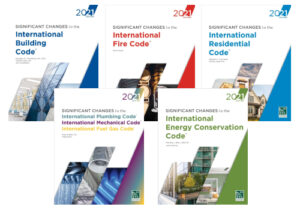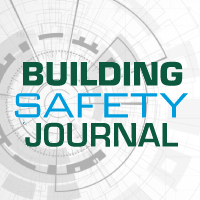
Significant changes to storm shelters in the 2021 International Building Code
A modification to Section 303 (Storm Shelters) in the 2021 International Building Code states that storm shelter requirements have been relocated to Chapter 3. The required occupant capacity is now limited to the total occupant load of the classrooms, vocational rooms and offices in the school while the maximum distance of travel has been deleted.
Storm shelter requirements have been moved from the prescriptive and work area methods and relocated to Chapter 3 to apply generally to all compliance methods. In addition, a new Section 303.1 clarifies the difference between storm shelters used solely during a tornado or hurricane and emergency shelters used after such events, requiring that a storm shelter comply with the International Code Council’s standard ICC 500. This language is now consistent with International Building Code (IBC) Section 423.
In the 2018 International Existing Building Code (IEBC), schools had to have a shelter suitable to house everyone who might be in a large assembly space on the site, such as a public library, football field, performing arts center, equestrian arena, natatorium, competition basketball arena or professional development center. Now, only the total occupant load of the students and staff need to be accommodated. The reasoning considers the fact that the code does not require storm shelters for the entire population that outdoor venues, such as outdoor football fields, can accommodate. It should not be necessary for schools to increase the size of the shelters based on their public assembly spaces. The assembly areas do not add to the normal population of students in school nor to the number of staff who are associated with those students. The additional people at the facility outside of school hours elect to be in those assembly areas, similar to any commercial or other public assembly area.
Section 1106.1.2 also previously required that storm shelters be within 1,000 feet of the buildings they serve. While the 1,000-foot maximum travel limit may be appropriate for new schools, it can be an undue hardship for existing buildings. The location of an addition may be limited by a variety of building and site constraints. Good disaster management practices will typically give schools a response time long enough to be able to move students to on-site shelters as appropriate.
A reference to IBC Section 423 has also been added, as it provides clarification of the occupancy classification of the storm shelter based upon whether it is a standalone structure or part of another occupancy.
Read the full significant change.
 The 2021 Significant Changes guides are available for the International Building, Fire, Residential, Energy Conservation, Plumbing, Mechanical and Fuel Gas Codes. This valuable series can help any code user save time by zeroing in on the most critical changes in the 2021 International Codes. The Code Council’s technical experts provide summaries, analysis and graphics for these changes making them clear and easy to understand. Each edition provides a comprehensive analysis of significant changes since the 2018 edition, offering key insights into its contents and implications. Each change analysis features the affected code sections and identifies the change with strikethroughs and underlines to show modifications to the existing language. Each change is accompanied by a quick summary, detailed illustrations, and a discussion of its significance, which brings the technical jargon of the code to life in a real-world setting.
The 2021 Significant Changes guides are available for the International Building, Fire, Residential, Energy Conservation, Plumbing, Mechanical and Fuel Gas Codes. This valuable series can help any code user save time by zeroing in on the most critical changes in the 2021 International Codes. The Code Council’s technical experts provide summaries, analysis and graphics for these changes making them clear and easy to understand. Each edition provides a comprehensive analysis of significant changes since the 2018 edition, offering key insights into its contents and implications. Each change analysis features the affected code sections and identifies the change with strikethroughs and underlines to show modifications to the existing language. Each change is accompanied by a quick summary, detailed illustrations, and a discussion of its significance, which brings the technical jargon of the code to life in a real-world setting.
Significant Changes to the International Building Code, 2021 Edition is available in the ICC Store or through Digital Codes Premium.








